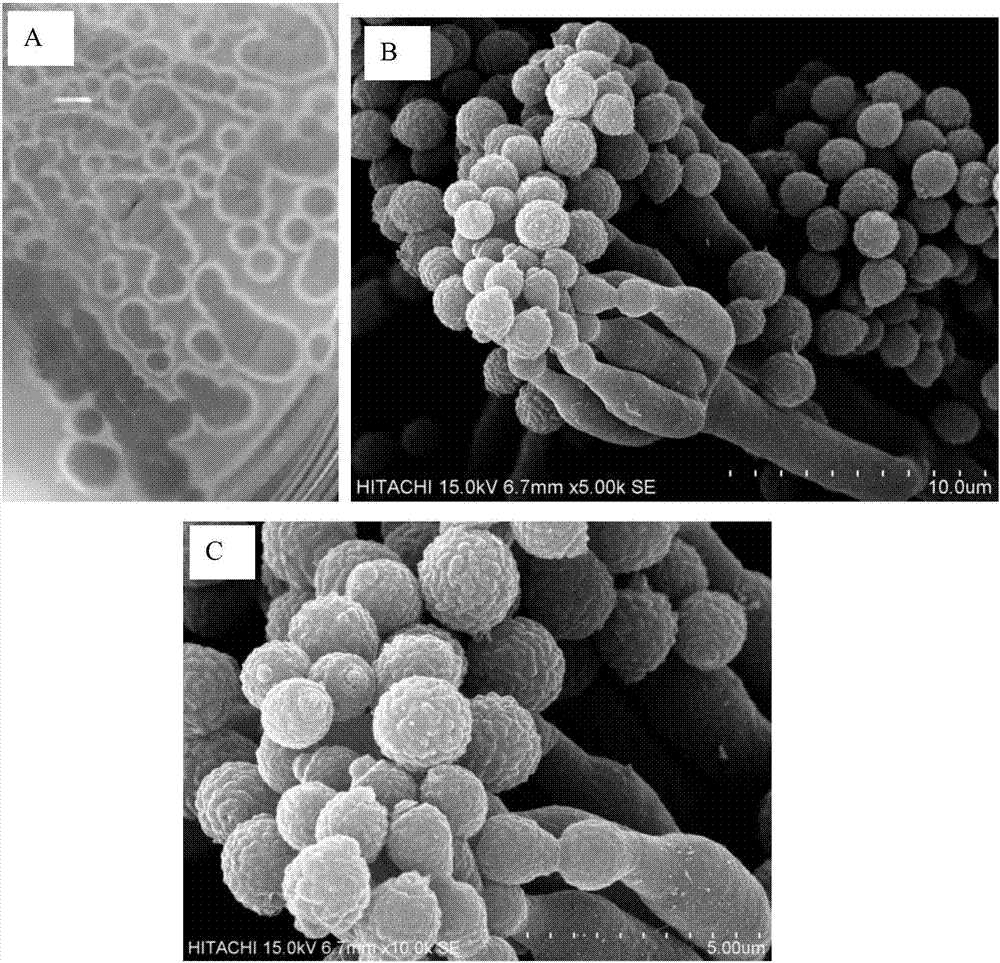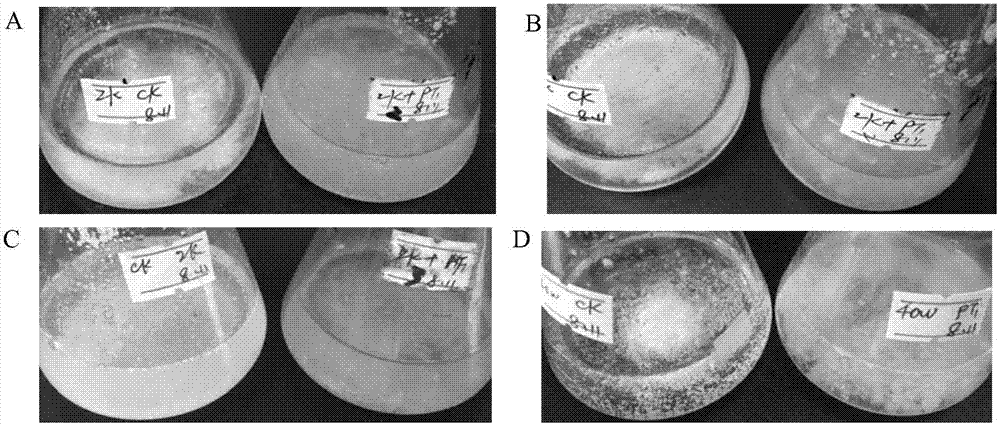Penicillium citrinum fungus for thin film degradation and application thereof
A technology for degrading film and Penicillium citrinum, applied in the field of agricultural biology
- Summary
- Abstract
- Description
- Claims
- Application Information
AI Technical Summary
Problems solved by technology
Method used
Image
Examples
Embodiment 1
[0028] Screening and Identification of Example 1 Penicillium citrnum PT1
[0029] Screening of Penicillium citrnum PT1: Sprinkle the polyethylene powder exposed in the natural environment for 7 days at 5% (W / V) evenly on the agar-based inorganic salt medium plate, culture at 30°C for 3-7 days, and pick the polyethylene powder. For the strains that can grow on the powder, streak on a solid medium to obtain a single colony (LB medium for bacteria, PDA medium for fungi, Gaoshi No. 1 medium for actinomycetes), and store at 4°C for future use. Inoculate the above-mentioned isolated strains into a liquid inorganic salt medium containing polyethylene powder and polyester biodegradable mulch film with a size of 15cm×2cm, culture on a shaker at 150r / min at 30°C, and observe the degradation of polyethylene powder and mulch film. Screening for strains capable of rapidly degrading polyethylene materials.
[0030] Identification of Penicillium citrnum PT1: extract the total DNA of the fun...
Embodiment 2
[0031] Example 2 Detection of Penicillium citrnum PT1's ability to degrade polyethylene powder
[0032] method:
[0033] Sterilization of polyethylene powder: Place polyethylene powders of different molecular weights (2000, 400000) in dry sterile stainless steel pans, spread them into thin layers, and irradiate them under a ultra-clean table ultraviolet lamp for 4 hours.
[0034] Penicillium citrnum PT1 degraded polyethylene powder test method is: add 100ml basic inorganic salt culture medium in 250ml Erlenmeyer flask, sterilize with high temperature and damp heat for standby, add 2 kinds of molecular weight (2000, 400000) polyethylene powder (with Sterilization), the addition amount is 5g / L, the inoculation loop is inserted into the Penicillium citrinum PT1 fungus, 150r / min, 30°C shaker culture, observe the change of polyethylene powder, and collect the gas and degradation effect images in the bottle every 7d ( figure 2 ), gas chromatography to determine gas composition and...
Embodiment 3
[0039] Example 3 Detection test of Penicillium citrnum PT1 degrading biodegradable plastic film
[0040] method:
[0041] Sterilization method of plastic film: soak in sterile 3% KCl solution for more than 30 minutes, rinse with sterile water for 3 times, soak in alcohol for 15 minutes (stirring is required during the soaking process, which is conducive to full disinfection), rinse with sterile water for 3 times, absorb with sterile filter paper After drying the surface moisture, dry it with ultra-clean typhoon and irradiate with ultraviolet light for half an hour.
[0042] Under sterile conditions, inoculate the Penicillium citrnum PT1 strain into the liquid basic inorganic salt medium containing 15cm×2cm sterilized polyester biodegradable plastic film (black and white), 150r / min, 30℃ Cultivate on a shaking table, observe the changes of the plastic film, and set up 3 parallel and blank controls in the experiment. The formula of the basic inorganic salt medium is as described ...
PUM
 Login to View More
Login to View More Abstract
Description
Claims
Application Information
 Login to View More
Login to View More - Generate Ideas
- Intellectual Property
- Life Sciences
- Materials
- Tech Scout
- Unparalleled Data Quality
- Higher Quality Content
- 60% Fewer Hallucinations
Browse by: Latest US Patents, China's latest patents, Technical Efficacy Thesaurus, Application Domain, Technology Topic, Popular Technical Reports.
© 2025 PatSnap. All rights reserved.Legal|Privacy policy|Modern Slavery Act Transparency Statement|Sitemap|About US| Contact US: help@patsnap.com



